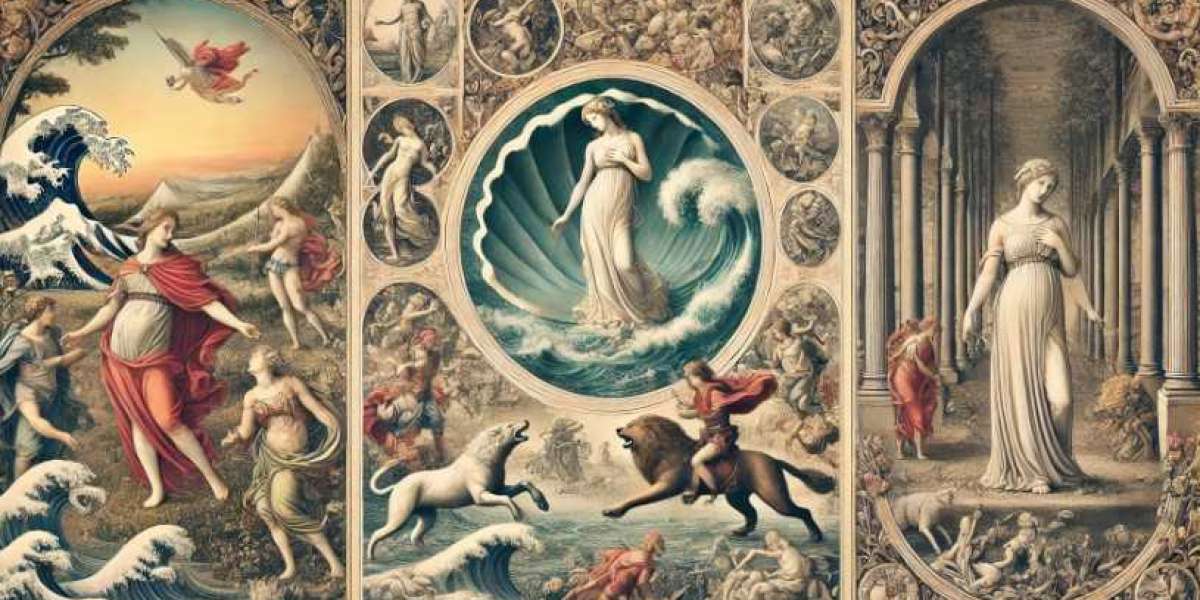Mythology has always been a profound source of inspiration for artists, capturing the essence of ancient stories that explore love, heroism, betrayal, and divinity. This post delves into the masterpieces of renowned artists like Botticelli, Rubens, Vasnetsov, Moreau, and Michelangelo, who transformed Greek, Roman, and folk legends into vivid, timeless images. Each painting not only tells a powerful story but also brings to life the deep symbolism and emotional intensity of these myths. Join us as we uncover the captivating tales behind these iconic artworks and the rich meaning they add to art history.
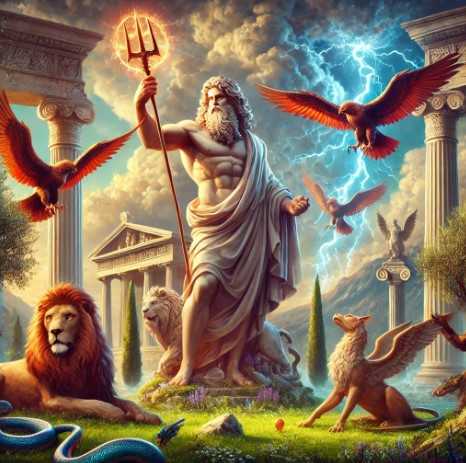
Sandro Botticelli, The Birth of Venus
Sandro Botticelli, a great Italian painter of the Early Renaissance, is celebrated as one of the finest illustrators of myths and creators of allegories. In Florence during Botticelli’s time, mythological themes were particularly popular. Ancient Greek and Roman myths were studied as historical narratives rather than folk tales. Interest in mythology spread rapidly among the elite, leading to frequent commissions of such works for Botticelli.
Ancient Greek myths depicted by famous artists have become windows into the past. The Birth of Venus is likely one of the best-known works, portraying the goddess of love and beauty as she emerges from a seashell, driven ashore by the sea breeze. On the left, we see Zephyr, the god of the west wind, and his lover, while Venus is greeted on the shore by one of the Graces. According to legend, Venus—also known as Aphrodite—was escorted to Olympus after her birth, where she was welcomed by other gods.
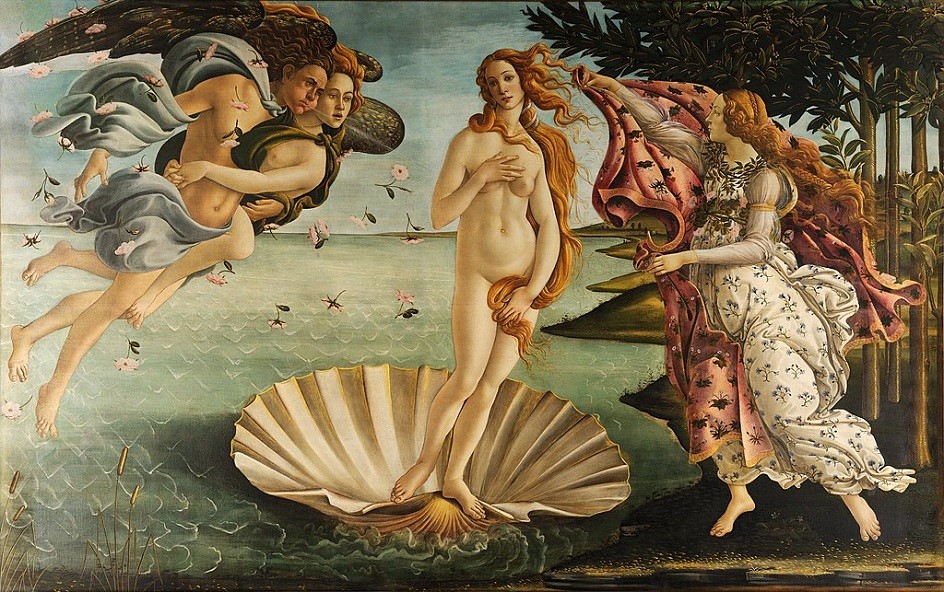
Symbolism in the Artwork As with all of Botticelli’s works, this painting is rich in symbolism. The orange tree, for instance, represents immortality, while the goddess Hora Thallo symbolizes pure celestial love. Zephyr represents earthly, carnal love, emphasized by his embrace with the goddess of flowers.
It’s believed that this painting was created for a member of Florence’s wealthiest family, Lorenzo di Pierfrancesco de’ Medici. Documentation shows he possessed the artwork for an extended period, though whether Botticelli specifically painted it for him remains a mystery.
Peter Paul Rubens, Perseus and Andromeda
Rubens' mythological paintings are considered timeless classics and some of humanity's greatest treasures. His style is unmistakable: if you see chubby cherubs and voluptuous nudes in a scene from Greek mythology, it’s almost certainly Rubens.
In Perseus and Andromeda, Rubens illustrates the budding affection between the rescuer and the rescued—truly a romantic story! Perseus and Andromeda are characters with fascinating backgrounds.
The Legend of Perseus’ Heroic Deed Andromeda was a beauty forced to atone for her parents’ sins, specifically her mother’s boastful pride at the wrong time and place. Cassiopeia, Andromeda’s mother, offended the sea nymphs with her vanity. They complained to Poseidon, who sent a fearsome sea monster to destroy the city. An oracle declared that the beast could only be appeased by sacrificing Cassiopeia’s daughter.
Andromeda was chained to a rock, left at the mercy of the creature, and discovered by Perseus—the son of Danaë and Zeus, who visited her in the form of a golden shower. Perseus, like Hercules, was a hero, known for his winged sandals and the feat of beheading Medusa. He then used her head to turn Poseidon’s monster to stone.
Before the fight, Perseus obtained her father’s consent to marry Andromeda, though her betrothed, Phineus, arrived with weapons to disrupt the wedding. Once again, Medusa’s head proved useful, and Perseus turned the intruders to stone, living happily with Andromeda for many years.
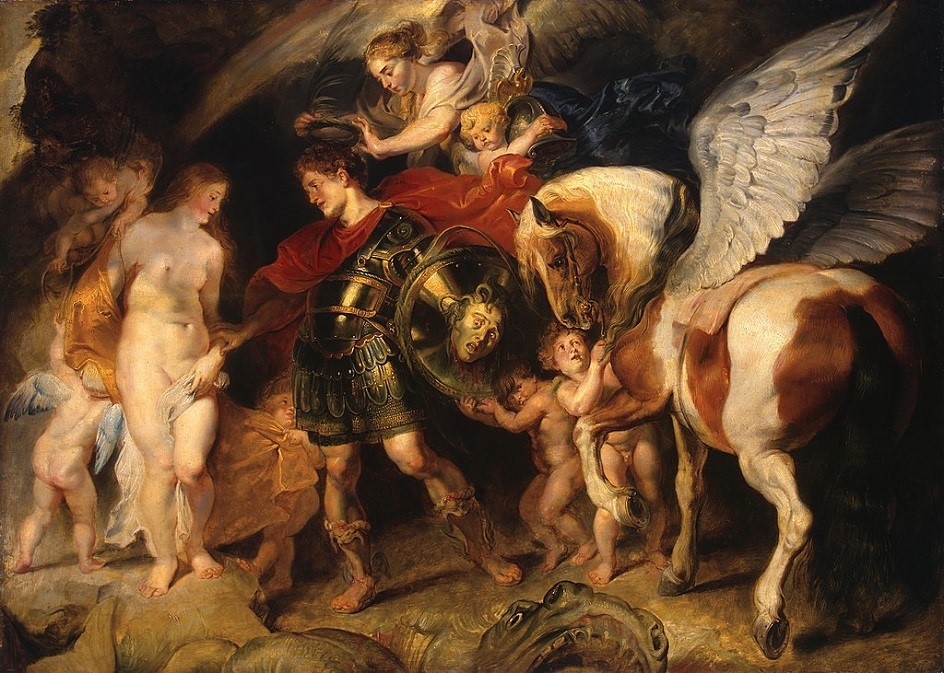
Viktor Vasnetsov, Ivan Tsarevich Riding the Grey Wolf
This painting illustrates the famous Russian fairy tale Ivan Tsarevich and the Grey Wolf. Vasnetsov created this work while also painting the frescoes of St. Vladimir’s Cathedral in Kyiv.
The fairy tale recounts Ivan Tsarevich’s adventures. Thanks to the grey wolf, Ivan finds the Firebird, Yelena the Beautiful, and a loyal horse, overcomes his envious brothers and the treacherous Koschei, and eventually becomes tsar. It’s a wonderful story about a brave hero and his adventures, imbued with the Russian spirit.
The Most Fairytale Painting in Russian Art The painting depicts Ivan Tsarevich with his beloved on the wolf, dashing through the forest to escape pursuit. Interestingly, Vasnetsov based the image of Yelena on portraits of Natalia Anatolyevna and Tatyana Anatolyevna Mamontov, cousins of the famous “girl with peaches.”
Each detail of the canvas is extraordinary, creating a mythical, fairy-tale atmosphere. Yelena represents a Russian version of Venus, embodying beauty and innocence. Ivan Tsarevich is akin to Perseus or Hercules. Myths from different cultures often echo each other, but each one is filled with unique qualities reflecting its society, making art a vivid archive of humanity’s beliefs, ideals, experiences, hopes, and fears.
Gustave Moreau, Jupiter and Semele
Gustave Moreau, a renowned French painter, is regarded as one of the best examples of late 19th-century Western European art. His painting Jupiter and Semele is truly grand, and during its creation, he had to stitch additional strips of canvas to continue his work.
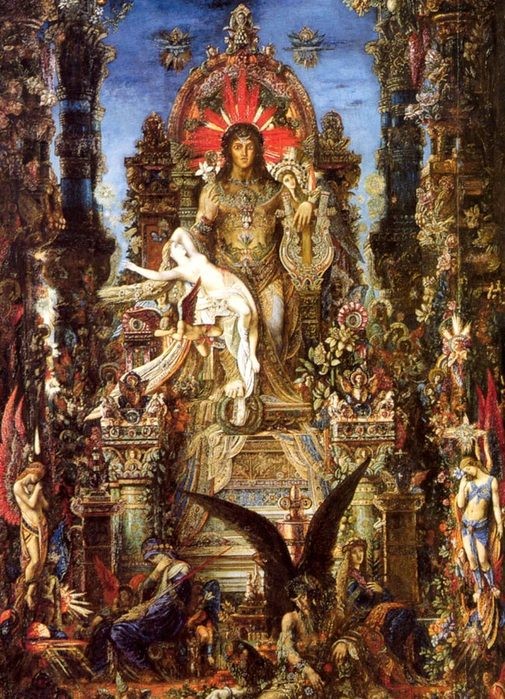
The Legend of Zeus and His Beloved The painting portrays one of the most tragic and poignant stories in Greek mythology. According to legend, Zeus’s lover Semele, the daughter of the King of Thebes and Harmony, fell victim to the jealousy of Zeus’s wife, Hera. Pregnant with Zeus’s child, Semele was deceived by Hera, who disguised herself as an old woman and convinced her to ask Zeus to appear in his true form—a request that spelled her doom.
Though Zeus initially resisted, Semele was adamant. Zeus transformed into his divine form amidst thunder and lightning, and one bolt struck Semele, killing her. Zeus saved their child, Dionysus, by sewing him into his thigh. When Dionysus grew up, he descended into Hades and rescued his mother, who later lived among the gods on Olympus under the name Thyone. A grand temple in Thebes was dedicated to her, where her cult thrived for many years.
Michelangelo, Judith and Holofernes
One of the most famous legends is immortalized in Michelangelo’s painting. According to the story, the Babylonian army surrounded the town of Bethulia, threatening its people with starvation and destruction, until a brave young widow named Judith took matters into her own hands.
Judith, beautiful and virtuous, sacrificed herself to save her people. Dressed in her finest attire, she took a maidservant and went directly to the enemy camp to meet Holofernes, the Babylonian general. Posing as a prophetess, she requested an audience.
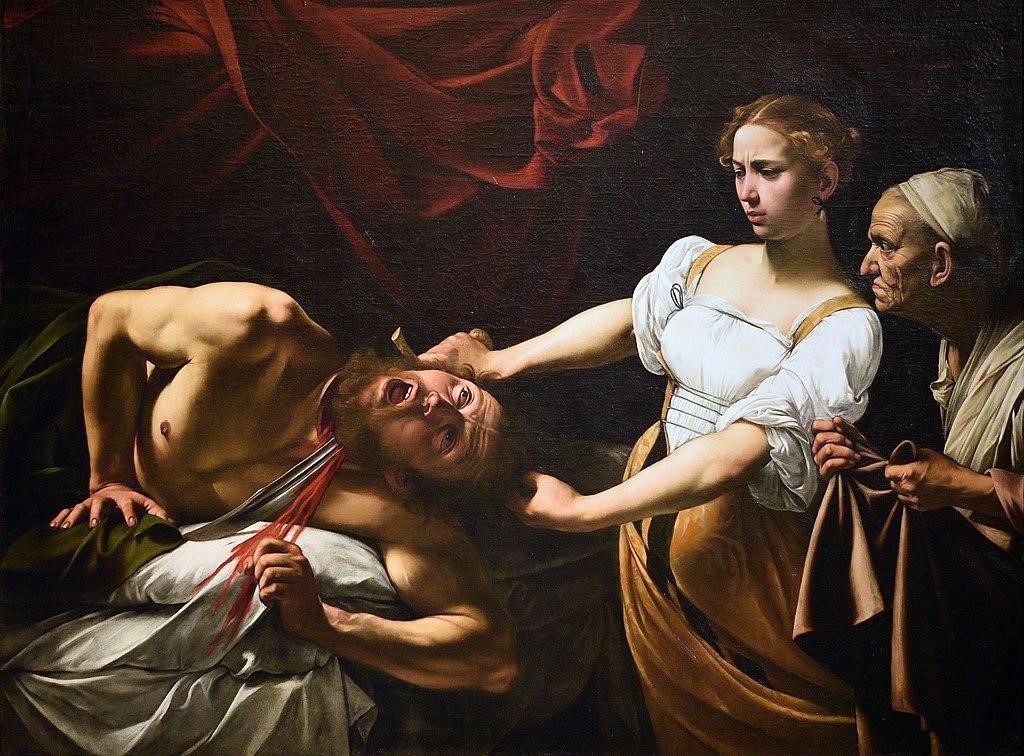
Judith, persuasive and alluring, promised Holofernes victory, claiming the Israelites had violated divine laws. Entranced, Holofernes invited her to stay. On the fourth day, he threw a banquet and, overwhelmed by desire, attempted to seduce her. But Holofernes drank so heavily that he fell into a deep sleep. Judith seized his sword and decapitated him. She and her maid returned to her city and displayed his head on the gates, sparking an attack on the enemy camp, causing the Babylonians to flee in terror.
Mythological Themes in Painting Mythological themes in painting are brimming with vibrant details. The subjects are conveyed with realism, while the stories are always rich and dynamic. Most importantly, these works are multi-layered and deeply symbolic, often revealing more than other types of art. Ancient myths encompass everything: heroic deeds and betrayals, love and hatred, battles and divine feasts—a true “action movie” in visual art!
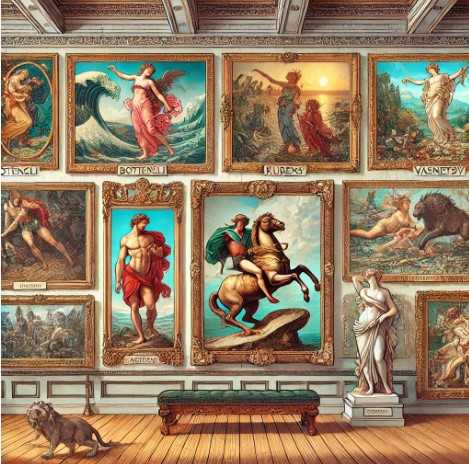
Mythology in art offers a window into humanity’s deepest values, desires, and fears, immortalized by the masterful strokes of artists throughout history. From Botticelli’s ethereal Venus to Michelangelo’s fearless Judith, these paintings not only tell timeless stories but also resonate with universal themes that continue to inspire us today. As we close this journey through mythological masterpieces, we hope you’ve enjoyed uncovering the layers of meaning and symbolism that make these works enduring treasures.
